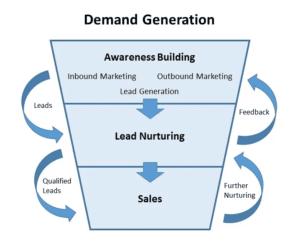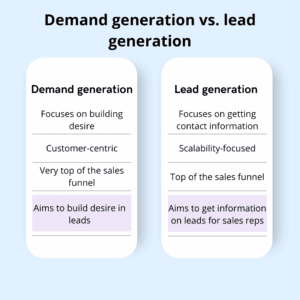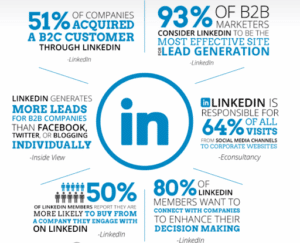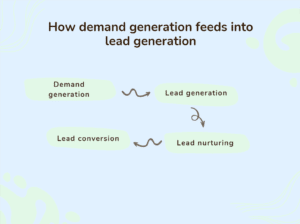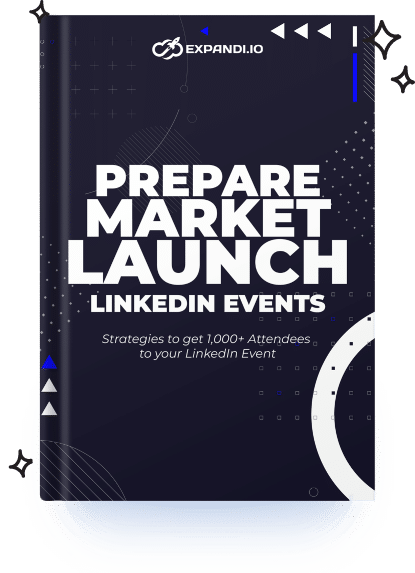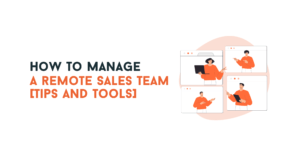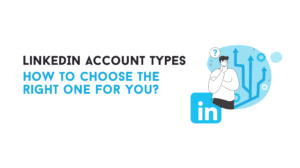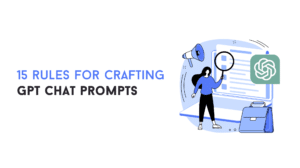Did you know that 89% of B2B marketers use LinkedIn for lead generation, and 62% say it generates great leads?
Indeed, LinkedIn is a great tool for both lead generation and demand generation.
Those phrases — “demand generation” and “lead generation” — are often used interchangeably.
But they aren’t the same.
So in this article, we’ll compare the key differences between them, including their purpose and goals, outcome, mindset, where they fit into the sales funnel, common strategies and tactics, and how to implement them into your LinkedIn strategy.
Here’s what we’ll cover:
And here’s a summary of what we found:
Table of Contents
TL;DR
- Demand generation is the process of building demand for your brand, products, and services. Its ultimate aim is to get leads to become customers.
- Lead generation is the process of gathering contact information from leads so that your sales reps can nurture them.
- Demand generation and lead generation differ on these six key things:
- Purpose and goals — Demand generation exists to drive interest in leads, while lead generation exists to get contact information from leads.
- Outcome — Demand generation’s ideal outcome is planting seeds of desire in leads, while lead generation’s ideal outcome is collecting usable contact information.
- Mindset — Demand generation is customer needs-centric, while lead generation is scalability focused.
- Where they fit into the sales funnel — Demand generation fits into the very, very top of the sales funnel, while lead generation fits slightly further in.
- Common strategies and tactics – Demand generation involves website, content, social media, LinkedIn marketing, and more, while lead generation involves strategies like scraping LinkedIn event attendee lists.
- How to implement them into your strategy using LinkedIn — You can conduct demand generation using posts, events, and networking, while you can conduct lead generation by scraping posts, events, and groups for contact information.
- Expandi can help you transform your LinkedIn outreach strategy. You can try Expandi with a 7-day free trial.
What is demand generation?
Demand generation is the process of building demand for your brand, products, and services through inbound and outbound marketing strategies to ultimately motivate prospective customers to act (i.e., make a purchase).
The main purpose of demand generation efforts is to make your offering seem desirable. Secondarily, demand generation helps potential customers overcome common pain points, offers a solution, and helps you nurture prospects into qualified leads.
Demand generation activities can be conducted using multiple channels. These include:
- Paid-Per-Click (PPC) marketing
- Social media posts
- A landing page
- Videos
- Blog posts
- Infographics
The defining characteristic of demand generation is the publishing of free content. This content introduces your solution to the consumer.
Effective demand generation tactics should significantly shorten the buyer’s journey in the sales funnel, create demand and new leads, and drive sales.
What is lead generation?
Lead generation is the direct and fruitful outcome of successful demand generation marketing strategies — it’s the act of creating leads by getting contact information from those interested in your offering.
Once you have a lead, you use sales funnel campaigns to nurture your leads into customers.
There are two types of lead generation: inbound lead generation and outbound lead generation.
If you’d like a complete overview of lead generation, read our article Lead Generation — How To Get High Quality Leads With Expandi.
Demand generation vs. lead generation: 6 key differences
The primary difference between demand generation and lead generation campaigns is that demand generation helps you to build desire within your target audience, and lead generation enables you to collect information on leads so you can start nurturing them.
Quite often, marketers use these terms interchangeably, and subsequently, it can be hard to differentiate between lead and demand gen. campaigns.
Learning all the differences between demand gen. and lead gen. can help you understand how these strategies work at a deeper level so that you can maximize your returns from them.
So without further ado, here are the six key differences you need to know:
1. Purpose and goals
Demand generation belongs at the top of the sales funnel because, during the demand generation process, leads learn about your product, brand, and services for the first time.
87% of sales and marketing leaders say the collaboration between sales and marketing enables critical business growth. So, the goal of the demand generation process is to build desire for your brand and product using marketing so that your sales reps have an easier time selling to prospects.
In short: it exists to drive interest during the initial buyer’s journey.
Lead generation also takes place at the top of the funnel — but it’s part of a slightly later stage. Its purpose is to find, qualify, and start to nurture inbound and outbound leads.
The goal of lead generation is to identify high-quality leads that fit into your Ideal Customer Profile (ICP). Specifically, you want to identify those with a very high chance of converting.
In short: it exists to get contact information for sales reps to use.
2. Outcome
Demand generation’s ideal outcome is planting the seeds of desire for your product in leads. These seeds will later flower as the customer decides to purchase your offering.
Often, potential customers may not realize they have a problem to solve or require your product or services. When you conduct demand generation, you show them how your product can help them so that you get them interested.
In comparison, lead generation’s ideal outcome is collecting high-quality contact information from leads. This includes obtaining:
- Phone numbers
- Names
- Emails
- Company information
This information will help sales reps communicate and engage with prospects efficiently.
Lead generation and demand generation also share a secondary outcome: increasing customer acquisition.
According to Ascend, 49% of companies report that increasing customer acquisition is their primary marketing objective.
3. Mindset
Demand generation campaigns are customer needs-centric. They focus on increasing the demand for your product or services by telling leads why they require them.
On the other hand, lead generation campaigns are scalability focused. They focus on attracting potential buyers at a high volume.
Now let’s dive deeper into the mindsets of marketers and leads…
- What are the mindsets of marketers and sales reps when they engage in demand and lead generation?
Marketers want to engage with new prospects and drive revenue as efficiently as possible. Efficiently means marketing that’s quick, cheap, and requires limited resources.
Sales reps want to expand their pool of potential customers and improve the leads’ understanding of their brand and product.
The mindsets of marketers and sales reps during demand and lead generation are pretty much interchangeable because the shared outcome is to convert prospects into leads and sell.
- What is the mindset of leads when they are in each phase?
During both the demand and lead generation processes, leads want to feel like they can build lasting relationships and gain value from your company. Leads also want to know if your product or service is cost-effective, practical, and trustworthy.
At the beginning of the demand generation stage, prospects are not yet certain which company to use and rely on. So, they are looking for a brand that will earn their trust.
- What challenges do marketers need to overcome with leads when they engage in demand and lead generation?
During demand generation, many marketers struggle to capture attention and build the interest of potential clients because, at this stage, there is no contact between sales reps and leads.
Reaching a broad audience that isn’t familiar with your brand is also difficult. Therefore, marketers must be strategic with their campaigns so they can overcome the hesitations leads have when they learn about a new brand or product.
In contrast, lead generation requires the marketer to be engaged, communicative, and encouraging of the prospect so that they move further into the sales funnel.
At this stage, consumers are already aware of the brand, so the priority of a lead gen. campaign is to focus on information gathering and lead nurturing.
During both demand and lead generation campaigns, many marketers struggle with creating personalized content that can address an individual’s needs. For example, creating spammy outbound email campaigns, untargeted blog posts, or poorly personalized LinkedIn connection messages often won’t capture a lead’s attention.
To avoid these common pitfalls, marketers should fall back on addressing the pain points and goals of their consumers, educating them about the solution, and addressing what their company aspires to achieve for the lead’s particular problem.
Of course, every consumer is different.
Therefore, sales reps and marketers must use a value proposition that directly speaks to the consumer. You can learn more about value propositions in our article: LinkedIn Sales Message: How To Stand Out With a Value Proposition.
4. Where They Fit into the Sales Funnel
The original theory of sales funnels started with the company-focused acronym AIDA. AIDA stands for Awareness, Interest, Decision-making, and Action.
A sales funnel is a metaphorical way to visualize, optimize, and measure the performance of a company’s sales and marketing efforts.
As discussed earlier, both demand and lead generation belong at the top of the sales funnel.
However, demand generation is at the very, very top of the sales funnel because its main purpose is to build interest and encourage leads to engage with your brand instead of a competitor’s brand.
In comparison, lead generation is slightly further into the sales funnel because its main purpose is to gather information from leads and push them further into the sales funnel.
5. Common Strategies and Tactics
So, how do you differentiate between lead generation and demand generation strategies?
Some popular strategies for demand generation include:
- Content marketing — Especially video marketing and blog posts.
- Social media marketing — Including marketing on Facebook, Instagram, Twitter, and Pinterest.
- LinkedIn marketing — LinkedIn allows you to network via posts, events, mutual connections, and more. If you use a data-driven LinkedIn strategy, you can reach a connection request acceptance rate of up to 90% and generate very high-quality leads.
- Case studies — These boost your brand’s authority and showcase your expertise. They also provide social proof and show leads how other members of your ICP have solved their problems.
- Website marketing — Including landing page marketing, developing service pages, and building knowledge bases for customers.
Read: How to Use the Best LinkedIn Practices for Demand Gen. and Social Selling.
Some strategies for lead generation include:
- Content marketing — Including using video content, blog posts, articles, and white papers as lead magnets. You can learn more about lead magnets in our article Lead Gen. Forms LinkedIn: How To Create, Connect, and Automate. It’s also interesting to note that 67% of B2B companies use lead generation metrics to determine the success of their content marketing.
- Social media outreach — Including outreach techniques like scraping Twitter follower lists or Facebook group participants.
- Cold email and cold call outreach — When done effectively, these can provide a high Return on Investment (ROI).
- Scraping LinkedIn events and groups — This is an easy technique to use, and if done correctly, you can earn yourself many qualified leads. Try searching for events or groups on LinkedIn from a popular competitor or LinkedIn page. Then, scrape leads from it using Expandi. You can learn more about LinkedIn groups in our article How To Get The Most Out of LinkedIn Groups With Expandi.
When marketers conduct lead generation, there are two other “techniques” they use:
- Evaluating lead generation campaigns using metrics, data, or analytics — These help you identify successful strategies and develop ways to improve your current practices.
- Implementing an omnichannel sales approach — Omnichannel strategies use a consistent sales funnel across many marketing channels. The Harvard Business Review found that around 73% of customers prefer purchasing through multiple channels. You can learn about the key differences between omnichannel and multi-channel approaches in our article Omnichannel vs. Multichannel: What’s the Difference?
6. How to Implement Them Into Your Strategy Using LinkedIn
To carry out demand generation on LinkedIn, try hosting events, starting groups, posting about your product and customers, engaging with other creators, and sharing informational videos.
To carry out lead generation on LinkedIn, try scraping contact details from events, groups, and posts, network with prospective customers, and try an outreach campaign.
LinkedIn is the perfect place for both demand generation and lead generation. Here’s why:
- You can increase engagement with your brand and get more leads — According to a study from Databox, 93% of marketers reported that engagement with their brand on LinkedIn has increased in the last year.
- LinkedIn (especially when used in partnership with automation software tools) can help you reach potential leads — 70% of B2B leads generated on social networks come from LinkedIn.
- You can reach your target audience quickly — Connecting with your target audience on LinkedIn can lead to faster conversions than other social media platforms. You can learn how to get more connections on LinkedIn in our article How To Get More Connections on LinkedIn.
- LinkedIn helps you build backlinks — You can use LinkedIn to expand the reach of your content marketing, thus, winning you more backlinks and leads.
- You can nurture leads subtly without being overly promotional (something that often scares leads away) — For example, you can use sponsored posts, comments, or events to build demand for your product while providing value to leads.
- You can use LinkedIn advertising to expand your reach outside your existing network — Ads can increase your ROI and introduce your brand to prospects who wouldn’t have stumbled across it naturally.
- You can automate your marketing efforts — Automation tools like Expandi can carry out your lead generation efforts automatically. Expandi can also help you bypass LinkedIn’s 100 connection requests a week limit.
It’s important to note that there’s a big difference between using LinkedIn manually and using LinkedIn in partnership with an automation tool.
Manual campaigns can be time-consuming and costly. Plus, you can get banned for breaking LinkedIn’s connection request limits.
Automation tools like Expandi can help you scale your LinkedIn efforts without sacrificing quality. Expandi, for example, can help you personalize your outreach messages with personalized images and GIFs.
Expandi’s smart sequences can help you interact with prospective leads without needing to press buttons yourself. For example, you can send a connection request, like their posts, view their profile, and send them emails.
Expandi also makes it easy to manage your B2B outreach campaigns. You can set up your campaigns in only 15 minutes.
How to combine your demand generation and lead generation efforts
Your demand generation and lead generation efforts have a direct impact on your business’s success.
When you integrate your demand generation and lead generation strategies, you can shorten your sales funnel, get better leads, nurture leads efficiently, and increase conversions.
Ideally, your lead generation, demand generation, and lead nurturing efforts should feed into each other.
For example, you can generate demand by posting short videos on LinkedIn that educate people about topics related to your product. You can then scrape these posts for the contact information of people who liked them. Then, you can use Expandi to reach out to these leads and nurture them.
Or, you can create a lead magnet and market it through PPC ads. Once people sign up for the lead magnet, you can use their contact information to reach out to them with a targeted email campaign.
To combine demand and lead generation, you need to develop brand messages, a brand tone, and dedicated brand talking points so that all your marketing efforts are consistent.
You must provide a positive, consistent, and valuable experience for leads. Otherwise, you won’t succeed in building trust with them.
Trust is vital for successful demand and lead generation.
Where does demand and lead generation collide?
There are many times when demand and lead generation strategies collide. After all, they are geared toward slightly different consumer groups at slightly different stages of the sales funnel.
Demand generation is for people who are new to your brand. Lead generation is for people who are slightly more familiar with your brand.
Sometimes, a demand generation tactic will send unintended messages to a lead. And sometimes, a lead generation tactic will scare a very new lead away.
So, if they sometimes collide, why should you implement both lead and demand generation strategies?
Implementing both strategies can help your business grow exponentially, as they have similar goals and outcomes. Eventually, the purpose of both is to convert leads. So, you need both to succeed as a brand.
Final thoughts: Demand generation vs. lead generation
In today’s busy and highly competitive landscape, it’s essential to use both lead generation and demand generation campaigns to generate high-quality leads, funnel leads into your sales pipeline, and boost conversions.
You really can’t use one or the other: demand and lead generation work best when used together.
And while the demand for high-quality demand and lead generation campaigns is growing, businesses often select the wrong channels for their target audience.
Amazingly, LinkedIn drives more than 50% of all social traffic to B2B websites and blogs — so you don’t want to neglect it.
That’s where Expandi comes into the picture.
Expandi can help your business execute a campaign that combines LinkedIn and email outreach, uses sales follow-ups, and is measured with real-time data analytics and insights.
Expandi can help you get results in just 24 hours.
See what Expandi can do for you by testing it out with a 7-day free trial today.

